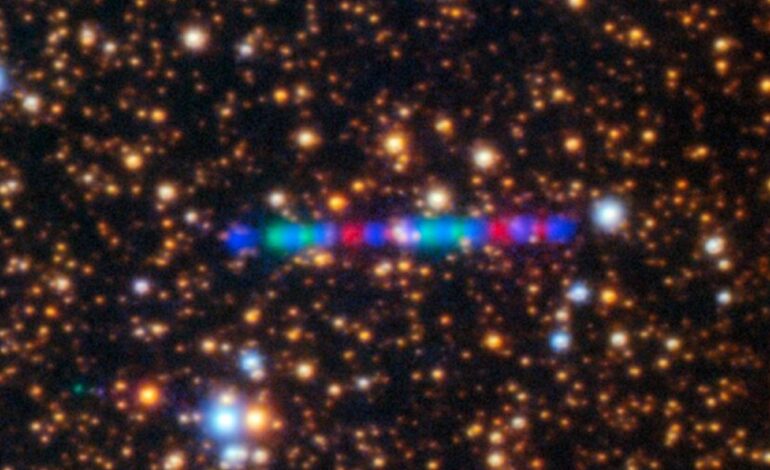Spacecraft Set to Analyze Comet 3I/ATLAS Tail in Unique Encounter

Two spacecraft, Hera and Europa Clipper, are poised to pass through the tail of the interstellar comet 3I/ATLAS in the coming weeks. This unique opportunity arises as the comet approaches its perihelion on October 29, 2023. A new study led by researchers Samuel Grand of the Finnish Meteorological Institute and Geraint Jones from the European Space Agency (ESA) suggests that both spacecraft could collect valuable data on the comet’s tail, which has been expanding significantly since its discovery in June.
Hera is en route to the Didymos-Dimorphos binary asteroid system, following the DART mission’s successful impact in 2022. Europa Clipper, on the other hand, is headed to Europa, one of Jupiter’s moons, to investigate its icy surface. Both missions are set to pass “downwind” of 3I/ATLAS, with Hera scheduled to make its approach between October 25 and November 1, while Europa Clipper will have its window from October 30 to November 6.
The growing tail of 3I/ATLAS has been described as “gushing” water, indicating its size and complexity. As the comet gets closer to the Sun, it sheds water particles and ions, which the researchers aim to study. While the opportunity for data collection is brief, the researchers remain optimistic about the prospects of gathering information on the tail’s composition.
To estimate the trajectory of the cometary ions, the researchers employed a model known as “Tailcatcher,” which calculates the potential paths of ions based on varying solar wind speeds. The model indicates that the two spacecraft will likely pass approximately 8.2 million kilometers from the central axis of the tail for Hera and 8 million kilometers for Europa Clipper. Although these distances are considerable, they still fall within a range suitable for detecting the tail’s ion composition.
Despite the excitement surrounding this mission, challenges remain. Hera lacks the necessary instruments to detect the ions or the magnetic field changes associated with the comet’s atmosphere. Conversely, Europa Clipper is equipped with the right tools, including a plasma instrument and a magnetometer, to potentially capture the ions and changes in the magnetic field caused by the comet’s interactions with solar wind.
The time-sensitive nature of this endeavor adds a layer of urgency. It is uncertain whether mission controllers for either spacecraft will receive and act upon this potential opportunity in time. If they do, they could become the first to directly sample an interstellar comet’s tail, a significant milestone in the history of space exploration.
This collaborative approach to studying 3I/ATLAS exemplifies the innovative spirit of contemporary space science. As the comet continues its journey through the solar system, researchers remain hopeful that this unique encounter will yield insights into the composition of interstellar bodies and the dynamics of their tails.
In summary, the planned passage of Hera and Europa Clipper through the tail of 3I/ATLAS represents an extraordinary chance to gather unprecedented data on an interstellar object. Should the mission be successful, it could reshape our understanding of comets and their behavior as they traverse the solar system.






